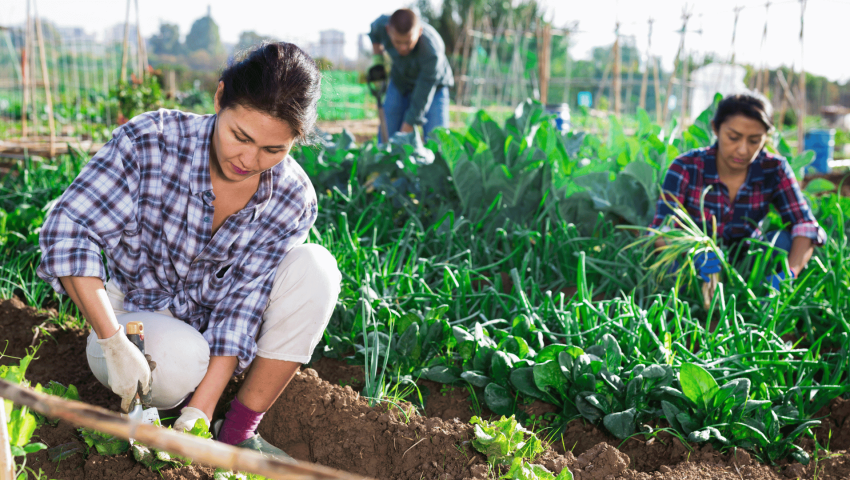
The Role of Overseas Workers in Australia’s Agriculture
Explore the critical role overseas workers play in Australia's agricultural sector. This comprehensive guide examines the impact of international labor on farm productivity, economic contributions, and cultural diversity in rural communities. Learn about visa programs, challenges faced by overseas workers, and strategies for creating mutually beneficial employment relationships in Australian.
“Overseas workers are vital to sustaining Australia’s agricultural sector, filling essential roles that support farm productivity and growth.”
The Importance of Overseas Workers in Australian Agriculture
Overseas workers have become an indispensable part of Australia's agricultural landscape, playing a crucial role in maintaining the sector's productivity and economic viability. Their contribution extends beyond merely filling labor shortages; these workers bring diverse skills, cultural perspectives, and often a strong work ethic that enriches the Australian farming community.
The reliance on overseas labor in Australian agriculture stems from several factors:
- Seasonal Labor Demands: Many agricultural activities, such as harvesting and planting, require a significant workforce for short periods. Overseas workers provide the flexibility to meet these fluctuating labor needs.
- Labor Shortages: Rural-to-urban migration and an aging local farming population have led to persistent labor shortages in many agricultural regions. Overseas workers help fill these crucial gaps.
- Specialized Skills: Some overseas workers bring specialized skills in areas like horticulture or livestock management, contributing valuable expertise to Australian farms.
- Economic Viability: The availability of overseas labor often makes the difference between a profitable harvest and crop losses due to labor shortages, particularly in labor-intensive sectors like fruit and vegetable production.
- Cultural Exchange: Overseas workers contribute to the cultural diversity of rural communities, bringing new perspectives and fostering international understanding.
The types of overseas workers in Australian agriculture include:
- Working Holiday Makers (backpackers)
- Seasonal Worker Programme participants from Pacific Island countries and Timor-Leste
- Skilled visa holders
- International students (with work rights)
- Pacific Australia Labour Mobility (PALM) scheme participants
These workers are involved in various agricultural activities, from fruit picking and vegetable harvesting to dairy farming and livestock management. Their contributions have become so significant that many agricultural businesses now rely on their consistent participation to maintain operations and meet production targets.
However, the reliance on overseas workers also presents challenges, including ensuring fair treatment, providing adequate accommodation, and navigating complex visa regulations. Addressing these challenges is crucial for the sustainable integration of overseas workers into Australia's agricultural sector.
Challenges and Opportunities in Employing Overseas Agricultural Workers
While overseas workers provide crucial support to Australia's agricultural sector, their employment comes with both challenges and opportunities. Understanding and addressing these aspects is essential for creating a sustainable and mutually beneficial working environment.
Challenges:
Language and Communication Barriers:
- Difficulty in conveying complex instructions or safety information
- Potential misunderstandings leading to errors or inefficiencies
Cultural Differences:
- Varying work ethics and expectations across cultures
- Potential for misunderstandings or conflicts due to cultural differences
Legal and Regulatory Compliance:
- Navigating complex visa regulations and work rights
- Ensuring compliance with fair work laws and industry awards
Accommodation and Transportation:
- Providing suitable housing, often in remote areas
- Organizing transportation to and from work sites
Training and Skill Development:
- Investing time and resources in training workers who may be short-term
- Addressing varying levels of agricultural experience and knowledge
Community Integration:
- Helping workers integrate into local communities
- Managing potential tensions between local and overseas workers
Opportunities:
Skill and Knowledge Transfer:
- Overseas workers often bring unique skills and perspectives
- Opportunity for cross-cultural learning and innovation in farming practices
Increased Productivity:
- Meeting labor demands during critical periods ensures timely harvests and operations
- Potentially higher productivity due to motivated workforce
Economic Benefits:
- Contribution to local economies through spending and taxes
- Enabling farms to expand operations and increase output
Cultural Enrichment:
- Diversification of rural communities
- Opportunity for cultural exchange and international connections
Workforce Flexibility:
- Ability to scale workforce according to seasonal needs
- Potential for return workers with developed skills and farm familiarity
International Market Insights:
- Workers may provide insights into international markets and consumer preferences
- Potential for developing export opportunities
Technology Adoption:
- Some overseas workers may bring experience with different agricultural technologies
- Opportunity to introduce new tech-savvy practices to traditional farming
By effectively managing these challenges and leveraging the opportunities, farms can create a positive environment that benefits both the agricultural sector and overseas workers. This approach not only addresses immediate labor needs but also contributes to the long-term sustainability and growth of Australian agriculture.
Best Practices for Integrating Overseas Workers in Australian Farms
Successfully integrating overseas workers into Australian farms requires a thoughtful and comprehensive approach. Implementing best practices can lead to a more productive, harmonious, and enriching experience for both the workers and the agricultural businesses. Here are key strategies to consider:
Comprehensive Onboarding:
- Provide detailed orientation covering farm operations, safety protocols, and local customs
- Offer translated materials and use visual aids to overcome language barriers
- Include cultural awareness training for both overseas workers and local staff
Clear Communication Channels:
- Establish multiple ways for workers to communicate concerns or ask questions
- Use translation apps or employ bilingual supervisors where possible
- Regularly check in with workers to ensure understanding and address issues promptly
Fair and Transparent Employment Practices:
- Clearly communicate job expectations, pay rates, and working conditions
- Ensure compliance with relevant awards and fair work regulations
- Provide detailed payslips and explain any deductions thoroughly
Quality Accommodation and Transportation:
- Offer clean, comfortable, and affordable housing options
- Ensure reliable transportation to and from work sites
- Provide information about local amenities and services
Health and Safety Focus:
- Conduct thorough safety training, considering language and cultural differences
- Provide appropriate personal protective equipment and explain its importance
- Ensure access to healthcare services and information
Skills Development and Recognition:
- Offer opportunities for workers to learn new skills and take on responsibilities
- Provide certificates or references recognizing acquired skills and experience
- Create pathways for career progression where possible
Community Integration:
- Organize social events that bring together overseas workers and local community members
- Encourage participation in local cultural and sporting activities
- Facilitate language exchange or cultural sharing sessions
Feedback and Continuous Improvement:
- Regularly seek feedback from overseas workers on their experience
- Act on suggestions to improve working and living conditions
- Conduct exit interviews to gain insights for future improvements
Support Services:
- Provide assistance with practical matters like banking, healthcare, and local regulations
- Offer support for visa-related issues or extensions
- Establish connections with relevant community support services
Cultural Celebration:
- Recognize and celebrate cultural diversity on the farm
- Accommodate religious or cultural practices where possible
- Organize multicultural events to showcase and share different cultures
By implementing these best practices, Australian farms can create a welcoming and productive environment for overseas workers. This not only enhances the workers' experience but also contributes to the farm's success and the broader cultural enrichment of rural communities. A well-integrated overseas workforce can become a valuable asset, contributing to the farm's productivity, innovation, and long-term sustainability.

MYHRLINK's Overseas Worker Solutions
MYHRLINK offers comprehensive services for integrating overseas workers into Australian farms, ensuring compliance, productivity, and positive experiences.
- Recruitment Assistance
- Cultural Integration
- Compliance Management
The role of overseas workers in Australia's agriculture sector is multifaceted and increasingly crucial. These workers not only fill critical labor gaps but also contribute significantly to the economic viability, cultural diversity, and innovation within the agricultural industry. As we've explored, their involvement brings both challenges and opportunities, requiring thoughtful management and integration strategies.
The success of overseas worker programs in Australian agriculture hinges on creating mutually beneficial relationships. Farms that invest in comprehensive onboarding, fair employment practices, and cultural integration initiatives are more likely to see increased productivity, worker satisfaction, and long-term benefits. These efforts not only address immediate labor needs but also contribute to the sustainability and growth of the agricultural sector.
Looking ahead, the role of overseas workers in Australian agriculture is likely to evolve. Factors such as technological advancements, changing global migration patterns, and shifts in agricultural practices will shape the nature of this workforce. Adapting to these changes while maintaining a focus on worker welfare and farm productivity will be crucial.
Moreover, the experiences of overseas workers can have far-reaching impacts beyond the farm gate. Positive experiences can lead to improved international relations, potential export opportunities, and the enrichment of rural communities. Conversely, poor practices can damage Australia's reputation and the long-term viability of these crucial labor programs.
In conclusion, overseas workers are not just a stop-gap solution for labor shortages; they are integral to the fabric of modern Australian agriculture. By recognizing their value, addressing challenges proactively, and implementing best practices for integration, the agricultural sector can harness the full potential of this diverse workforce. This approach not only benefits individual farms but contributes to the resilience, innovation, and cultural richness of Australia's agricultural landscape as a whole.

